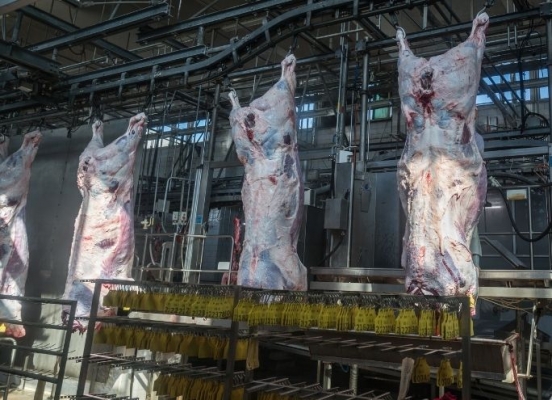Slaughterhouse Waste Management
A slaughterhouse or an abattoir is a facility where animals are massacred, usually to supply food for humans.
Slaughterhouse wastes consist of various pollutants such as animal blood, animal feces, bone, fat, animal trimmings, stomach content, and urine from operations or areas like lairage, bleeding, or stunning by-product and carcass processing. These Slaughterhouse Wastes can assort as solid, liquid, and gaseous forms.
Slaughterhouse wastes are the reservoir of parasitic pathogens, bacterial, prion, viral, and capable of contaminating animals and humans. Slaughterhouse waste disposal has been a significant environmental hurdle in all sectors of the world. Slaughterhouse Wastes’ chemical characteristics are related to the municipal residue, though the former is concentrated wastewater with 45% soluble and 55% dissolved organic composition. Blood has a much high COD of around 375,000 mg/L and is a considerable dissolved pollutant in slaughterhouse wastewater.
In most developing nations, there is no established strategy for the disposal of solid and liquid wastes produced in the slaughterhouse. The solid slaughterhouse waste is received and discarded in landfills or open areas. In contrast, the liquid waste is sent to municipal sewerage systems or water bodies, therefore threatening public health and physical and marine life. Wastewater of slaughterhouses is recognized to cause an escalation in the pH, COD, BOD, total solids, turbidity, and temperature, and may also create deoxygenation of water bodies.
Several methods for disposing of such wastes exist, including biogas generation, composting, fertilizer production, alkaline hydrolysis (AH), anaerobic digestion (AD), rendering, burning, and incineration.
Anaerobic digestion (AD)-
AD is a biological method by which natural wastes are decayed in the absence of oxygen, composing a residue of agricultural value, also biogas, which can be utilized to produce energy.
Anaerobic digestion (AD) is the most suitable choice for Slaughterhouse Waste Management, leading to the generation of energy-rich biogas, a decrease in GHGs effusions, and efficient pollution restraint in abattoirs.
Composting-
Composting is a method of disposal that gives recycling of the slaughterhouse waste nutrients back into the earth.
The method has several advantages, including decreased environmental pollution, the production of a helpful by-product, and the removal of many pathogens.
Alkaline hydrolysis (AH)-
AH describes a comparatively latest technology for the disposal of animal remains material and different infectious wastes. It practices a strong base, energy, and temperature to catalyze the hydrolysis of organic elements into a pure aqueous extract consisting of peptides, sugars, amino acids, and soaps. AH is capable of the inactivation of nearly all associated microorganisms.
The advantages of applying these methods to manage slaughterhouse wastes are extensive, and unpleasant waste products of the ever-growing meat industry are disposed of, and renewable energy is produced.
Slaughterhouse waste requires a sustainable and harmless discharge to the environment due to the large content of organics and nutrients. Hence, the treatment and final disposal of Slaughterhouse waste are public health necessities.
Hence all kinds of waste, liquid, solid, or gaseous, must be handled before discharge into the environment. Whereas the application of recoverable sources is suggested as a reasonable and practical choice to traditional energy sources in the long term, expenses associated with using these technologies will be compensated by the decrease in local power consumption and by-product recycling and reuse. Therefore, the potential of biogas formation as a power source, the utilization of fertilizers from nutrient restoration, and the Slaughterhouse Waste high-quality managed effluents for water reuse are to be viewed via a sustainable and more reliable production in the meat processing industry.
Consequently, the effectiveness of linked methods as an alternative to traditional methods has become a cost-effective way to process meat processing effluents to comply with relevant current laws worldwide.

